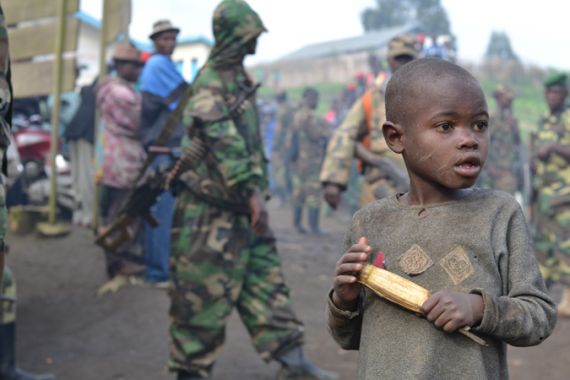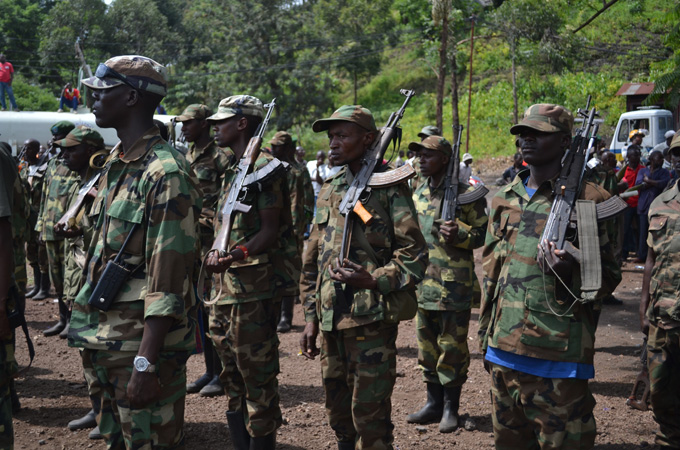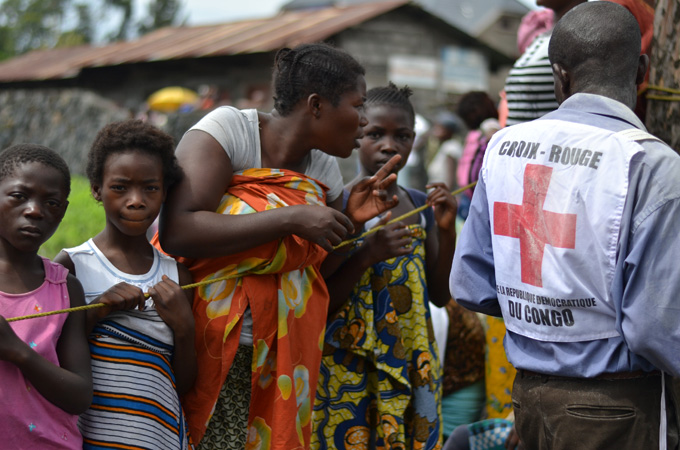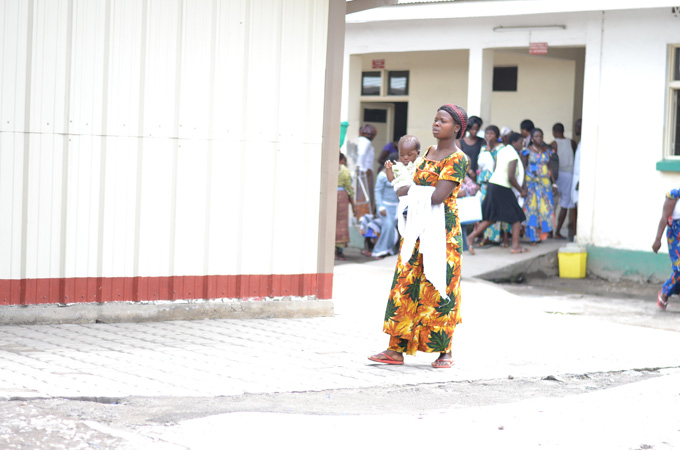Reporter’s Notebook: The rise of M23
Congolese rebels may have withdrawn from Goma, but there is a very real threat that fighting could soon return to DRC.

I met the eastern Congolese rebel group known as M23 in May 2012. Back then, I predicted that there would be conflict if diplomacy did not replace the gun. However, the speed and effectiveness with which the force took territory from the Congolese army, and eventually captured the provincial capital Goma, surprised everyone, including me.
Meeting the group’s leaders again in Goma, I had mixed feelings; suspicion at their intentions, and wonder at how M23 was able to control a city of more than a million, with around 2,000 soldiers.
The rule of this rebel force finally came to an end on December 1, with its withdrawal from Goma.
Our Al Jazeera team also left Goma the following day, and I personally felt a strong sense of guilt that we were not able to stay on. Given the long suffering of the people of this region, I did feel as though we needed to stay on in order to tell their story.
Since M23 withdrew and the throngs of journalists left Goma, the situation is calmer. But several businessmen who live and work there have told me that while they feel safe during the day, by night, the city is as dangerous as ever.
Reporting from Goma
 |
| Any understanding of the rise of the M23 would be incomplete without factoring in the role of DR Congo’s neighbours [Azad Essa/Al Jazeera] |
Unfortunately, there are very few international journalists permanently based in Goma to report on developments there.
One of the very few who lives and works in the city is Melanie Gouby. She has been there for nearly two years and complains that: “All that gets out in the news are the cities taken or lost, and the people killed and raped.”
She says that the media “doesn’t do much to explain the conflict, and it portrays Congo as a hopeless place in constant chaos”.
Melanie readily admits that “battling the administration is tiring, and navigating the lies and manipulation means you can’t rely on or trust very many people. But, overall, working as an international journalist in Congo is actually not that difficult, it is the local journalists who bear the brunt of the conflict and the lack of press freedom”.
The resilience of the Congolese people
One of the things that I find so appealing about covering eastern Congo is the resilience of the Congolese people. I found plenty of that tough spirit on a visit to Goma’s main trauma hospital run by the aid agency Heal Africa.
It has one small operating theatre, and is among the few locations in Goma where emergency surgeries are carried out.
In the concrete grounds of the hospital, almost everyone you meet has a cast or bandages from a bullet or shrapnel wound.
 |
| Ordinary Congolese have had to once more bear the brunt of a complex conflict [Azad Essa/Al Jazeera] |
I was dumbfounded to see a toddler with a thick plaster cast on each leg, somehow managing to pull herself up and hobble towards her mother, clearly in pain and fighting back tears.
I was very lucky to find the head surgeon, Dr Simplice Vukaka, a man who has seen and treated civilians on the frontline of so many conflicts in this region. Somehow, he is still able to remain jolly and talkative. He is firm with his staff, as well as some of the patients, but he is a man who is clearly admired.
“All these people, they don’t know about politics. They don’t know about the motivations of the fighting, but unfortunately they are the ones getting the consequences of the fighting, of the war,” he said.
The rise of the FDLR
One of the most worrying aspects of all of this is the increasing power of the armed group known by its French acronym, FDLR, or the Democratic Forces for the Liberation of Rwanda – which includes some of the perpetrators of the Rwandan genocide.
“The rise of M23 is the best thing that could have ever happened to the group,” says Jason Stearns of the Rift Valley Institute, adding that the mercenaries have been able to fill the vacuum left by M23.
M23 has taken control of territory from the Congolese army, but the group does not have the personnel necessary to maintain that control.
The Rwandans accuse the Congolese army of aiding the FDLR rebels. Rwandan foreign ministry officials have told Al Jazeera that they blame FDLR rebels for several recent incursions into their territory.
 |
| Hospitals were filled with the young and old as the human cost of the latest conflict added up [Azad Essa/Al Jazeera] |
According to the New York Times’ Jeffrey Gettleman there has been a worrying new development on the Rwandan side of the border. He says: “Hundreds of troops from opposing sides have been moving into new positions around Goma.”
Gettleman adds that: “Witnesses reported that truckloads of Rwandan soldiers recently crossed the border and were camped within 20 miles of Goma.”
My sources on the ground and at the United Nations cannot confirm this. However, there is certainly concern about a build-up of troops on both sides of the border, and UN peacekeepers are stepping up their patrols.
The focus now is on negotiations between DR Congo, Rwanda and representatives of M23. A series of meetings among the key players in the region have so far failed to herald a breakthrough. Jason Stearns from the Rift Valley Institute says he is “not very optimistic” as all sides “have been playing games, and arguing over procedure”.
There is a real threat that fighting could return soon. Three quarters of a million people have been displaced already, and frankly many of them have nowhere to go.